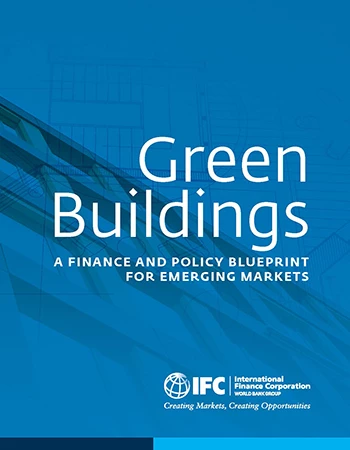During the next decade, green buildings represent a significant low-carbon investment opportunity in emerging markets—$24.7 trillion by 2030. Cities in emerging markets are expanding at a fast pace to keep up with high population growth and rapid urbanization. The floor area of the buildings that dot our skylines is expected to double by 2060. Most of this growth will occur in residential construction, particularly in middle-income countries. Meeting the demand for new buildings through green construction can spur low-carbon economic growth and create skilled jobs in emerging markets for decades to come.
Emerging evidence indicates that green buildings are a higher-value, lower-risk asset than standard structures. Besides lowering energy consumption, and therefore operational costs, greener buildings typically achieve higher sale premiums and attract and retain more tenants, ensuring a more continuous revenue stream. In addition, green buildings can help investors and owners manage the risks associated with a transition to a lower carbon economy. This transition will bring regulatory, economic, and resource changes, and some energy inefficient assets will no longer be profitable.
Contents
This new report: Green Buildings—A Finance and Policy Blueprint for Emerging Markets shows how financiers, governments, developers and building owners can take the lead in shaping and accelerating this multitrillion-dollar business opportunity.
- Executive Summary
- Introduction
- Understanding the Market for Green Buildings
- Building the Market for Green Buildings
- Conclusions and Recommendations
